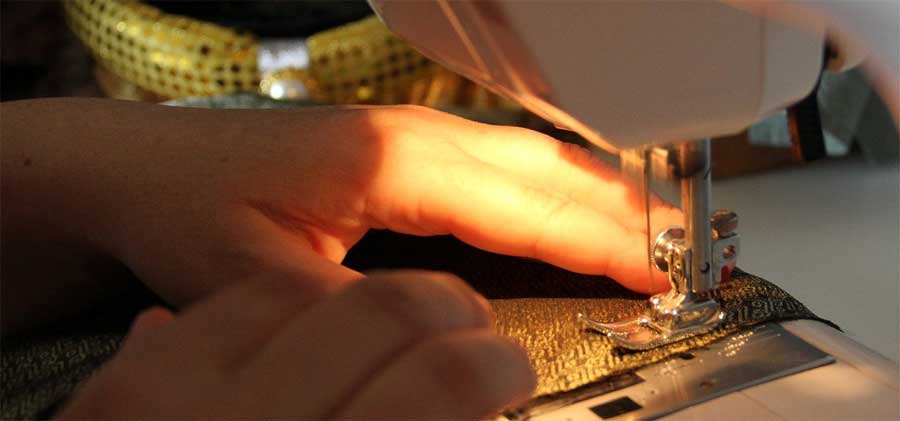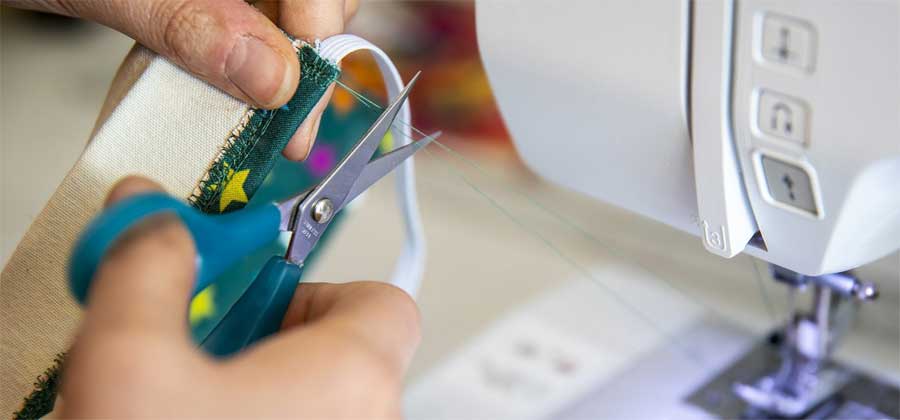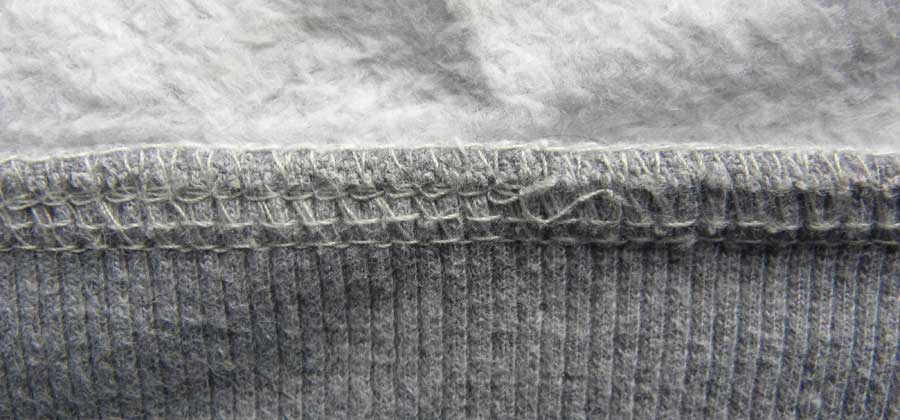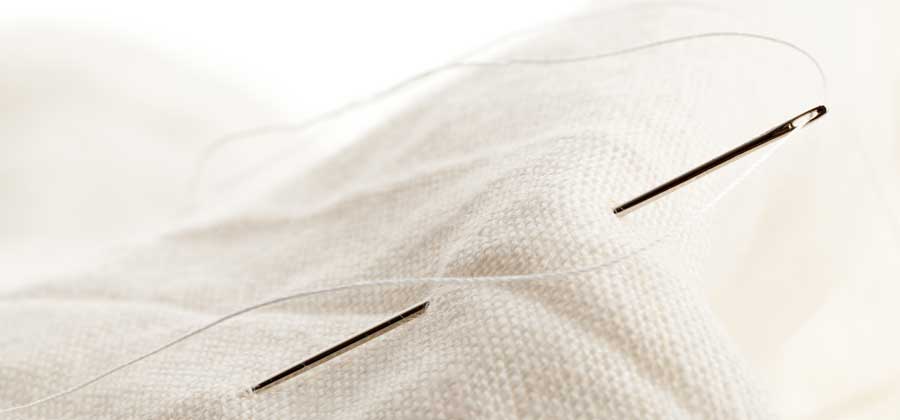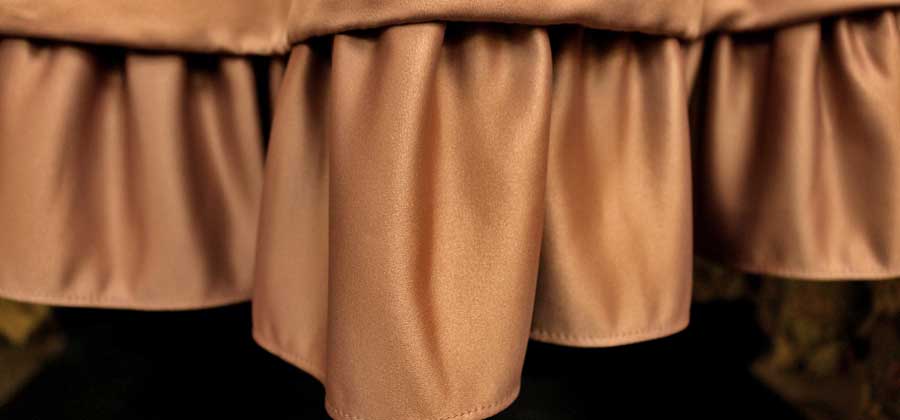Whether it’s traveling in a foreign country or knowing the terminology for a project you are working on, being able to speak the language is important. Today’s article reviews some basic sewing language that will be helpful to new sewists while still being a great refresher and idea generator for those who are more experienced. Think of these sewing terms as a “language acquisition and refresher” resource!
Note: This is Part 1 of our General Sewing Terms series. See Part 2.
Seam Allowance
Seam allowance is the distance between the stitching line and the cut edge of the fabric.
In garment sewing, the most common seam allowance included in patterns is 5/8” but it is important to confirm this for each pattern you use. Some pattern companies use a 3/8” seam allowance as their standard while some, like Burda Style and Marfy, include no seam allowance on their patterns so you must add it when you cut the pattern pieces out. If you are quilting, you are most likely going to use a standard of 1/4” seam allowance.
When deciding the size of seam allowance you want to use, there are a few things to consider:
- Begin by checking your pattern details. If you sew a 5/8” seam allowance on a pattern designed with a 3/8” seam allowance, you will have downsized each seam by 1/2”. In a simple skirt with 2 side seams and a center back seam, you will have reduced the circumference by 1-1/2.” Might be a bit too small to squeeze into now!
- The amount of stress that will be placed on a seam is an important factor. A 1/4” seam on a quilt that will not be stressed may be fine, but a 1/4” seam on an center back seam in pants you will apply stress to as you bend and sit might not be enough to prevent pulling through the fabric and splitting that seam open. Watch for clothing malfunctions!
- The type of fabric being used is also important. Sturdier fabric like denim can handle a smaller seam allowance at stress points that a finer fabric.
- The shape of the seam line will dictate the best size of your seam allowance. Curved seams, like princess seams and collar stands will turn much more smoothly with a smaller seam allowance than a larger one.
Back Stitch
Backstitching is something you do at the beginning and end of each seam to secure it and prevent unstitching.
The desired outcome — seams not pulling apart at either end — can be accomplished in a few ways.
- Backstitching is exactly what it sounds like. At the beginning of a seam, start a few stitch lengths inside the cut edge of the fabric and stitch backward to the edge, then stitch forward the length of the seam.
- Leave long thread tails at the beginning and end of each seam then tie them off with a double knot before trimming.
- If your machine has a “fix stitch”, start each seam with this as it will make a few stitches in place before continuing the seam. At the end of each seam, use a “stop stitch” if you machine has this option. It does the same thing as the fix stitch but without continuing the seam. This is a less secure choice than a back stitch or tying threads off.
Seam Finish
The primary purpose of finishing seams is to protect the cut edge of the fabric from raveling during wear and laundering.
There are many options to choose from but, remember knit fabrics do not ravel, so this task is specific to when you are sewing with wovens.
The secondary purpose is to provide a nice, clean look on the inside of the garment. Some sewists will say they want the inside of the garment to look as beautiful as the outside. Here are a few options you can consider:
- Pinking – One of the simplest things you can do is trim your seams with pinking shears. As with any sewing tool, you can get budget friendly Fiskar pinking shears for as low as about $15 or higher quality Gingher shears for around $50. The end result may not provide the most finished look, but it will reduce the ravel effect during laundering.
- Serger – Using a serger for seam finishes is quick and provides a more ready-to-wear look on the inside of the garment. After stitching the seam in place, your serger can both trim the seam and overcast the cut edge all at once.
- French Seam – This method requires two steps, sewing two seams. The first seam is sewn with WRONG sides together, usually with a 1/4” seam. Trim that small seam closely, them flip to the RIGHT sides together, enclosing the initial seam, and stich again at a scant 3/8”, resulting in a total of a 5/ 8” seam allowance. Obviously, you need to adjust these two widths to result in the final seam allowance width desired. The result is a nice clean finish as well as the double strength of the two seams. It is often used with sheer fabrics like chiffon since the inner seam is frequently a bit visible through the sheer fabric.
- Hong Kong Finish – This method is particularly popular in garments like unlined jackets. It is accomplished by taking bias strips of fabric and first stitching them to the right side of the seam allowance cut edge. Next press the bias strip away from the seam, extending over the cut edge, then wrap it to the wrong side of the seam allowance. Stich in the ditch to fix the wrapped bias strip in place then trim close to the stitching line, removing the excess fabric on the wrong side. This take a bit more time, but with a fun print can create some fun interest on the inside of the garment.
Grading Seams
Grading seams is something you do to reduce bulk.
It refers to the practice of trimming seam allowance layers to different widths. Typically, the “public side” of the seam, meaning the side that is closest to the outer layer of the garment, maintains the greatest width with each layer toward the interior of the garment being trimmed slightly shorter. The innermost seam allowance may be trimmed as narrow as 1/8”. The result of grading is a smoother transition, avoiding a bulky ridge of sandwiched seam allowances showing through to the right side.
Basting
Basting is sewing long, easily removable stitches by machine or by hand.
It is also sometimes called tacking. Basting stitches temporarily join fabric for several reasons, such as:
- Test the fit on placement of things like pockets or darts before sewing more permanent stitches.
- Hold slippery fabrics together while you sew the permanent stitches.
- Replace pins and make it easier to machine sew.
- Holding a zipper or hems on bulky jeans in place for stitching.
- Holding two or more layers of fabric together so they can be worked as one layer, such as when basting together the layers of a quilt.
Here are a few basting tips:
- Use a contrasting color of thread to make it easy to see when you are ready to remove your basting stitches.
- When hand basting, use a simple running stitch.
- When machine basting, use at least 4.0 stitch length. If your machine has a longer stitch, use it for easier removal.
- Stitch with a slightly smaller seam allowance to avoid trouble removing the basting after the permanent seam has been sewn. For example, if you are using a 5/8” seam allowance for the permanent stitch, use 1/2” to 9/16” seam allowance for your basting.
Gathering
Gathering uses long stitches to hold the fabric in place for the permanent stitching with the additional purpose of scrunching a longer length of fabric together into ruffles so it can be attached to a shorter piece of fabric.
There are several ways to accomplish this:
- Using the same long machine stitch used for basting, stitch two parallel rows on either side of the seam line. Holding the bobbin thread from both rows, pull the fabric together into evenly distributed gathers, matching the length of the fabric it will be sewn to.
- Sew a long and wide zig zag stitch over a heavy thread, being careful not to stitch through the heavy thread. Pull the heavy thread to accomplish the gathering. The heavy thread can be things like dental floss, topstitching thread, thin yarn, etc. Choose something that is strong enough to pull the fabric together without breaking.
- With both gathering options, leave a long thread tail at each end. Secure one end by wrapping the thread tails around a straight pin in figure eight style to prevent pulling your gathering threads out when gathering.
- This last option will secure the gathering thread automatically. Leave long thread tails at the beginning and end, just like in the previous methods. Using the same long stitch length, stitch about 1/ 4” from the edge of the fabric to be gathered. Stop, with needle down, at the end of the gathering location. At this point, you are basically going to make a U-turn on your fabric. With the needle down, lift the presser foot and pivot 90 degrees then take a couple of stitches. The number of stitches you take will depend on whether you prefer to gather on either side of where your permanent stitching line will be or only inside the seam allowance. Now drop the needle again, raise the presser foot and pivot another 90 degrees. You have now made the full U-turn and can stitch back down the length of the fabric again to your starting point. When you pull your thread to gather the fabric it will not pull out the threads!
Now you have added, or maybe refreshed, some basic sewing terms. We hope this has been a helpful experience in your sewing “language acquisition” journey as well as given you a few helpful tips on how to accomplish them in your real sewing life. And so, for now, ciao and arrivederci and the happiest of sewing to you all!
~Sheryl Belson





